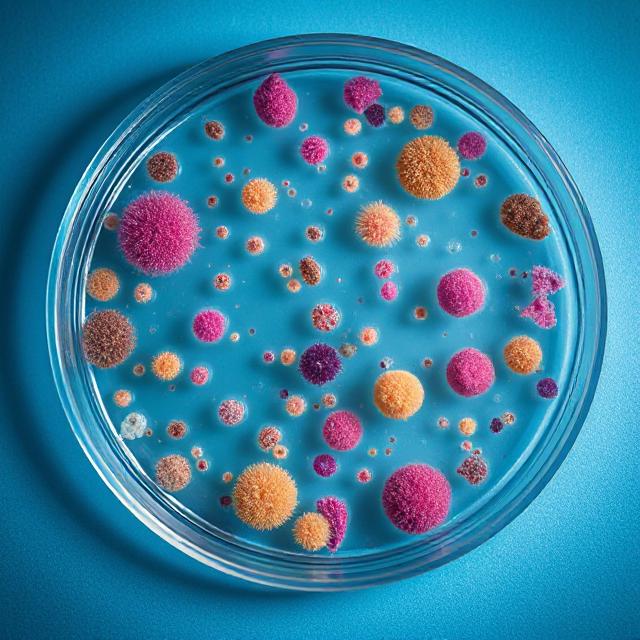Microbial Fermentation: Engineering Life to Manufacture Tomorrow
Part 1/20: Introduction to Microbial Fermentation
Microbial fermentation is among the oldest biological tools known to humanity—and now, one of its most transformative. It is the invisible alchemy performed by microorganisms like bacteria, yeasts, and filamentous fungi, converting simple substrates such as sugars into valuable end products: from bread and beer to biofuels, vaccines, alternative meats, and even rocket fuel precursors.
This process, refined over billions of years by evolution and now accelerated by synthetic biology, sits at the crossroads of biology, chemistry, engineering, and computation. In this course, we’ll examine microbial fermentation as both a natural metabolic function and a precision industrial platform capable of shaping the 21st century.
💡 What Is Microbial Fermentation?

At its essence, microbial fermentation is a set of biochemical reactions that allow cells to generate energy and maintain redox balance, typically in anaerobic environments. Microorganisms like Saccharomyces cerevisiae or Escherichia coli metabolize sugars into acids, alcohols, or gases, depending on their enzymatic machinery and environmental conditions. The key is that they do this without external electron acceptors like oxygen—unlike respiration, where oxygen is the terminal acceptor in the electron transport chain.
In practice, “fermentation” is often used more broadly in biotechnology to describe any controlled microbial process in a bioreactor, whether or not oxygen is involved. For instance, the aerobic production of recombinant proteins in E. coli or Pichia pastoris is still referred to as fermentation, even though oxygen plays a critical role in growth and metabolism.
Fermentation can be:
- Anaerobic: no oxygen, often resulting in ethanol, lactic acid, or other byproducts.
- Aerobic: oxygen is used, and the microbe may channel energy toward biomass or product formation.
It’s this flexible metabolic capability that makes microbial fermentation so powerful and adaptable for industrial applications.
🧬 A Brief History: From Beer to Biologics
Fermentation is not just an industrial process—it is civilization’s oldest form of biotechnology. Ancient Sumerians and Egyptians used spontaneous fermentation to produce bread, beer, and mead, likely without knowing the microbial agents responsible. These early societies domesticated microbes long before they could see them.
The scientific turning point came in the 19th century, when Louis Pasteur, while studying wine spoilage, demonstrated that fermentation was driven by living organisms. His work disproved spontaneous generation and laid the foundation for microbiology. Pasteur’s iconic statement—“Fermentation is life without air”—captured the essence of anaerobic metabolism.
In the 20th century, microbial fermentation moved into the realm of global medicine and defense:
- 1928–1940s: Penicillin production by Penicillium chrysogenum was scaled up via deep-tank fermentation, saving countless lives in World War II.
- 1970s–1980s: The recombinant DNA revolution allowed insertion of human insulin genes into E. coli, enabling scalable biologic drug production.
Today, fermentation enables the production of:
- Therapeutic proteins
- Organic acids (e.g., citric acid, lactic acid)
- Amino acids (e.g., glutamate, lysine)
- Enzymes for detergents, food, and pharmaceuticals
- Sustainable alternatives to meat, dairy, plastics, and textiles
It has evolved from mystery to mastery—thanks to genetic engineering, metabolic modeling, and bioprocess innovation.
🌎 Why Fermentation Matters in 2025 and Beyond
In today’s era of climate change, food insecurity, supply chain fragility, and health inequity, microbial fermentation is a strategic technology.
🔗 Food Security & Alternative Proteins
Companies like Perfect Day, Quorn, and The EVERY Company are using precision fermentation to produce animal-free milk proteins, mycoproteins, and egg whites. These biomanufactured proteins reduce land use, emissions, and animal welfare concerns.
💊 Biopharmaceuticals
Fermentation is the foundation of recombinant drug production. From insulin and interferon to COVID-19 enzymes and monoclonal antibodies, fermentation platforms in E. coli, yeast, and even cell-free systems are ensuring high-yield, high-purity therapeutics.
🔋 Sustainability & Energy
LanzaTech is engineering gas-fermenting microbes to convert carbon monoxide and CO₂ into ethanol and other fuels. Solar Foods grows edible biomass using hydrogen and carbon dioxide, creating a circular protein economy.
🚀 Space Biotechnology
NASA and DARPA are investigating microbial systems that can:
- Recycle astronaut waste into nutrients
- Manufacture plastic and fuel on Mars
- Maintain closed-loop life support systems
Fermentation, in short, is the backbone of Earth-based biomanufacturing—and the seed of space-based sustainability.
🦠 Key Microbial Workhorses in Biotech
1. Escherichia coli (E. coli)
- Gram-negative bacterium, model organism
- Fast-growing, well-characterized, genetically tractable
- Used for protein production, DNA assembly, biosensors
2. Saccharomyces cerevisiae
- Yeast used in baking, brewing, and ethanol production
- Excellent for eukaryotic expression systems
- Strong GRAS status (Generally Recognized As Safe)
3. Corynebacterium glutamicum
- Gram-positive, low endotoxin profile
- Industrial workhorse for amino acids
- Easier downstream processing than E. coli
Other rising stars:
- Bacillus subtilis – good secretion profile
- Pichia pastoris – high-density expression
- Yarrowia lipolytica – lipid metabolism powerhouse
- Clostridium autoethanogenum – gas fermentation
🧠 From Pasteur to Doudna: The Programmable Cell Factory
Louis Pasteur opened the door to fermentation science by identifying microbes as the engines behind the process. Today, Jennifer Doudna’s work on CRISPR-Cas9 has turned these engines into programmable factories. With precise gene editing tools, scientists can now rewire microbial genomes to:
- Redirect carbon flux
- Insert synthetic operons
- Knock out byproduct pathways
- Balance redox and ATP needs
CRISPR has elevated fermentation from empirical tinkering to rational, modular design.
🔜 Looking Ahead in the Course
In the upcoming chapters, we’ll go deeper into the science, engineering, and economics of microbial fermentation:
- How microbial physiology dictates production profiles
- What happens inside a 200,000-liter industrial bioreactor
- How automation and AI are revolutionizing process control
- How companies like Ginkgo Bioworks, Arkeon, and DeepBranch are pushing biology beyond carbon boundaries
Whether you’re building a startup, scaling a CDMO, or just curious about how yeast can build a better future, this course will give you the technical depth and real-world context to join the microbial revolution.
👉 Next Lesson: Core Microbial Physiology for Fermentation :Part 2
